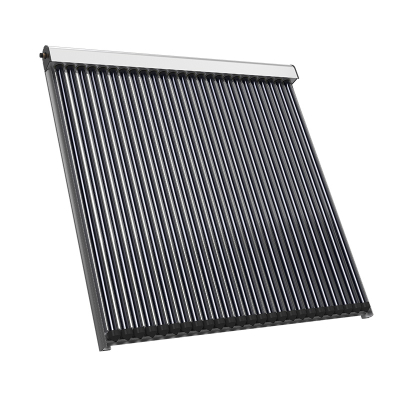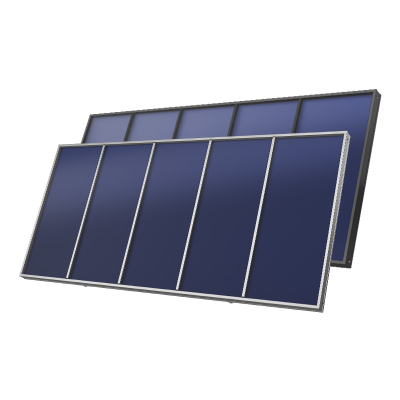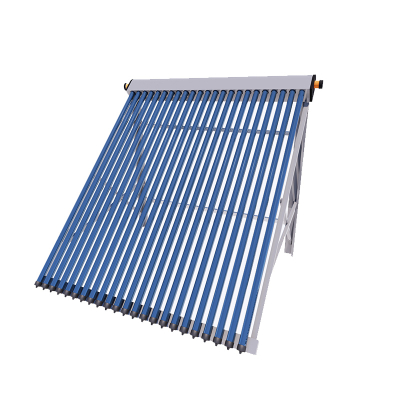What Are the Benefits of PVT Solar Systems?
What Are the Benefits of PVT Solar Systems?
Cut your energy bill and double your output? That’s what PVT technology promises.
If you're running a factory, hotel, or office complex, you're likely looking for smart ways to reduce energy costs while boosting sustainability. Traditional solar panels are a great start, but Photovoltaic Thermal (PVT) systems go one step further — and it’s a big one.
PVT solar systems combine electricity and heat generation in one unit, making them more efficient than traditional PV systems. They save space, reduce energy waste, and help cut CO₂ emissions — ideal for commercial and industrial use.
Not just efficient — they’re smarter, too.
While traditional solar panels convert sunlight into electricity, they miss out on the thermal energy that gets wasted as heat. PVT systems capture that heat, turning it into usable hot water or process heat for your building. That means more usable energy from the same surface area.
Let’s break down the benefits in detail.
What are the benefits of photovoltaic thermal systems?
PVT systems are hybrid panels that generate both electricity and heat from the same surface. This dual-functionality brings a number of advantages:
Higher total efficiency: While a standard PV panel has an efficiency of 15-20%, a well-designed PVT system can reach overall efficiency of 60-70% by capturing waste heat.
Space saving: One panel does two jobs, making them ideal for rooftops with limited space.
Reduced thermal losses: The cooling effect from the thermal collector actually helps the PV cells perform better.
Lower carbon emissions: By reducing the need for separate gas-based water heating systems, businesses cut both emissions and bills.
Government incentives: Many regions offer subsidies for hybrid solar energy systems — check your local energy program.
Great for integration: PVT works well with heat pumps, BIPV facades, or thermal storage systems.
How efficient is a PVT system?
Very efficient — and not just electrically. Traditional PV panels tend to lose efficiency as they heat up, especially in hot climates. PVT panels solve this with a built-in cooling system (often using water or air), allowing the PV cells to operate closer to their optimal temperature.
Here’s what that means in numbers:
PV cell output may drop by 0.4% per °C as temperature increases.
PVT’s cooling system can maintain cell temperatures 10–20°C lower.
That can increase PV electricity output by 5–20%, depending on conditions.
Plus, the captured heat isn’t wasted — it's used for hot water, HVAC, or even industrial processes.
What is the difference between PV and PVT?
| Feature | Traditional PV | PVT System |
|---|---|---|
| Output | Electricity only | Electricity + Heat |
| Efficiency | 15-22% | Up to 70% total |
| Cooling | None | Actively cooled |
| Cost | Lower upfront | Higher upfront, better ROI |
| Use Case | Homes, basic solar | Commercial buildings, factories, large-scale energy needs |
So if your building uses both electricity and thermal energy (e.g., hot water, heating, process heat), PVT makes far more economic sense.
Are PVT systems cost effective?
Yes — especially in the long run.
While PVT systems have a higher upfront cost than traditional PV, their payback period is often shorter, particularly in high-energy-use buildings.
✅ You save on:
Electricity bills
Gas or heating fuel
Roof space (one system instead of two)
Maintenance (one installation to manage)
In commercial installations, ROI can be achieved in 4–7 years, depending on the country, energy prices, and system design. Plus, you may qualify for green energy tax credits or government incentives for dual output systems.
Check US PVT commercial incentives →
How does a photovoltaic thermal hybrid solar collector work?
A typical PVT panel includes:
Photovoltaic cells on the front to generate electricity.
A heat exchanger behind the cells, often a metal or polymer channel.
Fluid circulation system (water or glycol) that captures excess heat.
Optional thermal storage (buffer tank) to hold hot water or transfer it to a heat pump.
As sunlight hits the panel:
Electricity is generated on the surface.
The heat that would normally build up is captured and removed by the fluid.
That fluid then circulates to your hot water tank, HVAC, or industrial system.
This is why the term "dual output solar panel" is often used to describe PVT.
Why are PVT systems ideal for commercial buildings?
Because they match real-world energy usage.
Commercial buildings often require electricity for lighting and machines, plus thermal energy for:
Hot water (restaurants, hotels, hospitals)
Space heating (offices, warehouses)
Process heat (factories, breweries)
Instead of installing separate systems, PVT provides both. And with solar panel cooling technology, you actually get better performance than two standalone systems.
Plus, by reducing grid dependence, you gain energy independence and protection against rising energy costs.
How does solar panel cooling improve performance?
High temperature is one of the main factors that reduce solar panel output. Every degree above 25°C can lead to performance drops in conventional PV systems.
PVT panels solve this with:
Liquid cooling circuits under the PV cells
Heat exchangers to pull away waste heat
Thermal storage or direct thermal use
Result?
More electricity from cooler PV cells
Free heat captured for other uses
Longer system lifespan due to reduced thermal stress
What is the future of hybrid solar energy systems?
Hybrid systems like PVT are gaining strong momentum globally.
In Europe, countries like Germany and the Netherlands already have strong adoption in public buildings.
In China, there’s increasing investment in solar + heat pump combinations, with PVT playing a major role.
The technology is also seeing growth in agriculture, data centers, and green hydrogen production.
Expect to see advances in:
Wavy pipe designs for better heat transfer
Nanocoating materials to reduce losses
Integration with thermal batteries and smart building systems
See latest market trends for PVT systems →
Ready to double your energy output?
PVT solar systems aren’t just more efficient — they’re smarter, space-saving, and better suited for commercial energy needs. If your business is ready to cut costs and reduce carbon emissions, it’s time to take a closer look.




